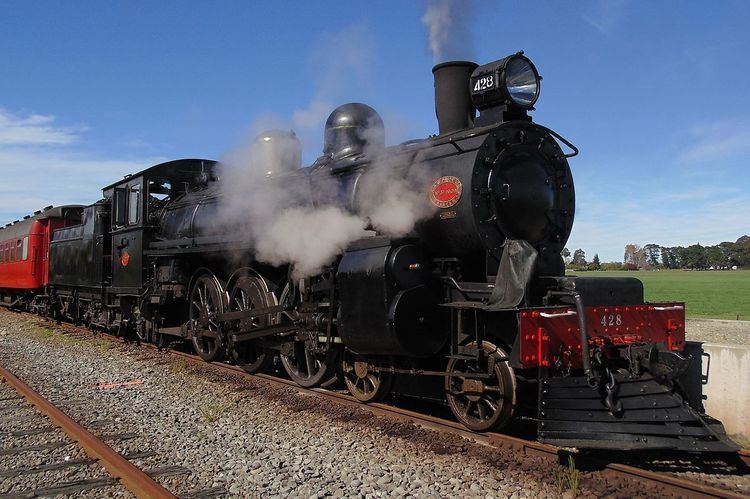Power type Steam Total produced 58 Driver dia. 54 in (1.372 m) | Build date 1906–1914 | |
 | ||
Builder Addington Workshops (8),A & G Price (50) | ||
The A class were steam locomotives built in 1906 with a 4-6-2 wheel arrangement for New Zealand's national railway network, and described by some as the most handsome engines to run on New Zealand rails. The class should not be confused with the older and more obscure A class of 1873. They were designed by the New Zealand Railways Department's Chief Mechanical Engineer, A. L. Beattie and his Chief Draughtsman, G. A. Pearson to replace less powerful locomotives struggling with increasing loads on the South Island Main Trunk Railway, and in anticipation of the traffic volumes that would be created upon the completion of the North Island Main Trunk Railway.
Contents
Origin and Design
The Baldwin Q had established the Pacific as the way forward for Express passenger locomotives, but the C.M.E decided that greater efficiency was needed. The new locomotives were therefore designed as compounds. The Vauclain system had proved ineffective in New Zealand so the type attributed to Frenchman Alfred de Glehn was adopted.
The first four had Stephenson valve gear inside and Walschaerts valve gear outside, while the following 53 had just Walschaerts. The first eight locomotives were built at New Zealand Railways Department's Addington Workshops, the rest by A & G Price of Thames. The first twenty-seven were built with intercepting valves allowing full simple operation. This feature was later removed from all but the first four, and the last thirty were built without and classified as AD until 1915.
Service and Modifications
Initially fifty Price built engines were allocated to the North Island the rest to the South. The class were delivered with 1700 gallon tenders which were inadequate for work on the NIMT. To solve this larger tenders were ordered for the BB class which were given A class tenders. Delivered with saturated boilers, one of the class was given a superheated boiler after two years. Cost meant the rest were converted only as their boilers wore out. From the thirties onward the class were fitted with pressed-steel smokebox doors for Waikato spark arrestors, although not always the arrestors themselves.
Although competent engines the maintenance of the inner cylinders was difficult. In 1941 No. 582 was converted to two cylinder simple arrangement. The last was finished in 1949 and the class remained successful performers thereafter.
Until the arrival of large numbers of the AB class the As' were country's premier express engines. Starting in 1932 thirty-eight of the North Island engines went south. By this time they were being relegated to secondary and branch line service. Despite this the last North Island engine was not withdrawn until 1961 and the last in the south until 1969, near the end of steam. The final A class to be withdrawn was A 428.
Preservation
Two class members have been preserved:
A 409
The eighth locomotive built, A 409, was built in 1908 as a two-cylinder simple-expansion locomotive for comparative purposes against the four-cylinder compounds. Fitted with an ALCO superheater as a trial when built, it was marginally more powerful than the other A class locomotives as a result despite having only two cylinders. Despite its differences, it was classified for a time as AB 409 up until the 1930s along with the mechanically derived AB class locomotives.
A 409 was withdrawn in October 1959 and was scrapped at Linwood locomotive depot as being largely 'non-standard'.
